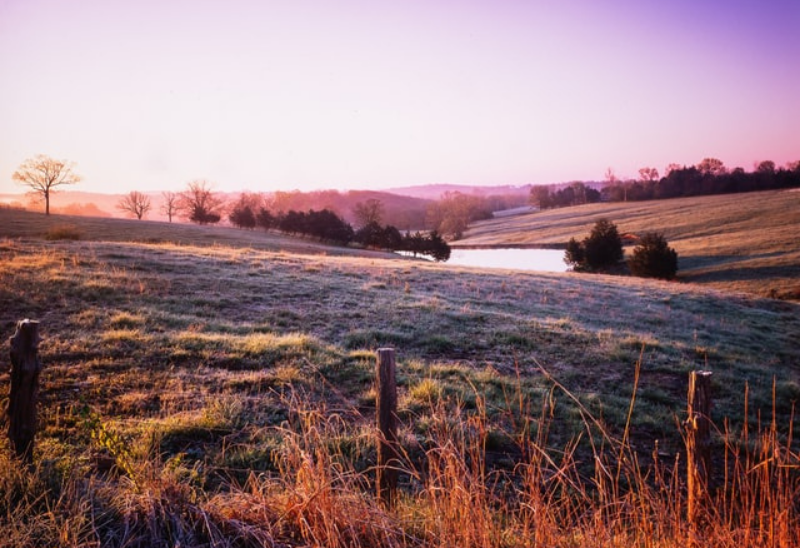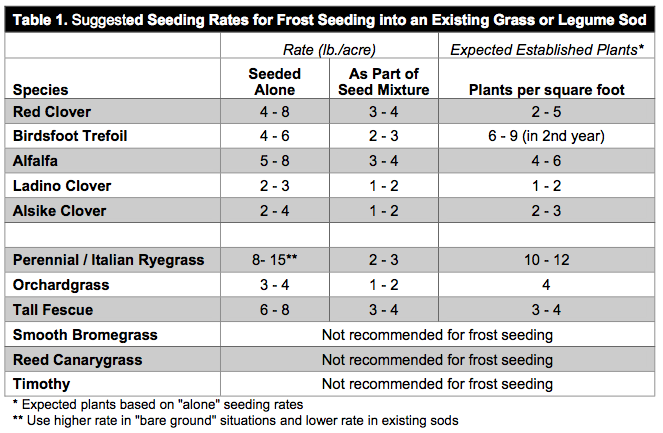Author: Jennifer Howard
The short days of winter usually mean a break from field work. We focus on planning, retooling, and repairing in preparation for the growing season to come. But did you know that winter is actually a great time for seeding, specifically, frost seeding? Are your pastures or forage plots looking a bit thin? Or do you want to introduce some new forage species to your pasture or improve your forage yield? Frost seeding is the easy and inexpensive way to do all three. And now is the time!
What is Frost Seeding?
Frost seeding is the smart but shamelessly lazy way to improve your farm pastures and forage plots. By spreading hardy seed at the right time, you allow nature’s ground-freezing and thawing cycle to work the seed into the soil for you.
Have you ever noticed that muddy pasture areas tend to stand a little taller when frozen? You may remember from elementary school science that ice takes up more space than liquid water. That’s why winter’s freezing temperatures cause our soils to expand. The soil heaves up and cracks when the surface water freezes overnight and then retreats and closes during the daytime thaw. This natural process sucks surface seeds into the soil for germination without any human effort nor tillage. It’s the cheapest farm labor you’ll find. Take advantage of nature’s free labor!

The Advantages of Frost Seeding
Expense: This is the closest to a layup that planting gets. Frost seeding requires little to no equipment, negligible soil prep, and leaves no tillage impact. Aside from the seed cost and a few passes across the pasture, that’s it.
Adding Forage Species and Fertility: Frost seeding is also a great opportunity to Improve your forage species mix and diversify your livestock’s diet. Adding legumes to your pastures and plots not only provides high quality animal forage, it also feeds the surrounding plants by fixing nitrogen from the air to nourish neighboring plant species or your next crop. You’re not only improving your species mix but replacing supplemental nitrogen fertilizer at about ⅓ the cost.
Minimal Land Impact: Frost seeding allows you to seed into established sod and/or forgo erosive tillage by letting nature do the work. Done well, frost seeding is a no-brainer to inexpensively revitalize over-grazed or low-yielding fields.
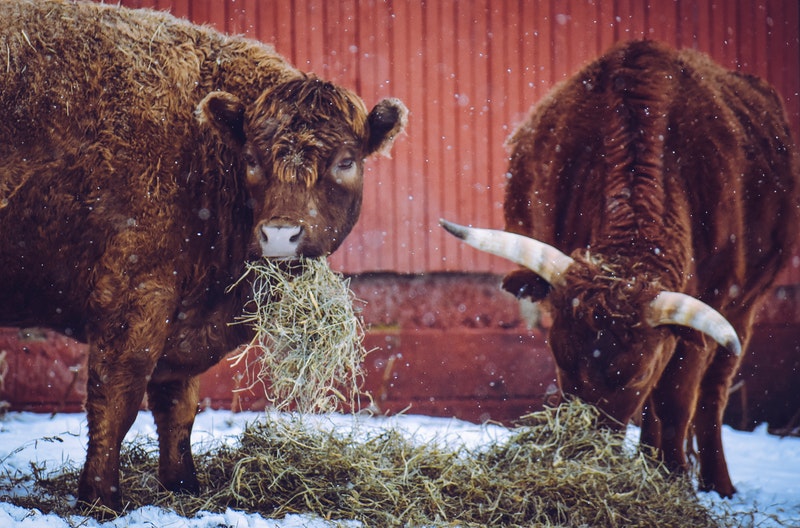
Which Forage Species Can I Frost Seed?
This is a critical question! Not every plant species is suitable for frost seeding. Small-seeded hardy legumes are excellent choices for frost seeding. Both white and red clover do well, as do birdsfoot trefoil and alfalfa seed. Their hardiness, seedling vigor, and wide pH tolerance make them top choices for winter frost seeding.
A few cool season grass species fare well in frost seeding, but not all grasses. Perennial ryegrass and orchardgrass are generally the most successful candidates for frost seeding; smooth bromegrass is also a possibility. Legumes and grasses can be frost seeded in the same year but require separate spreading runs and reduced seeding rates (more on that shortly).
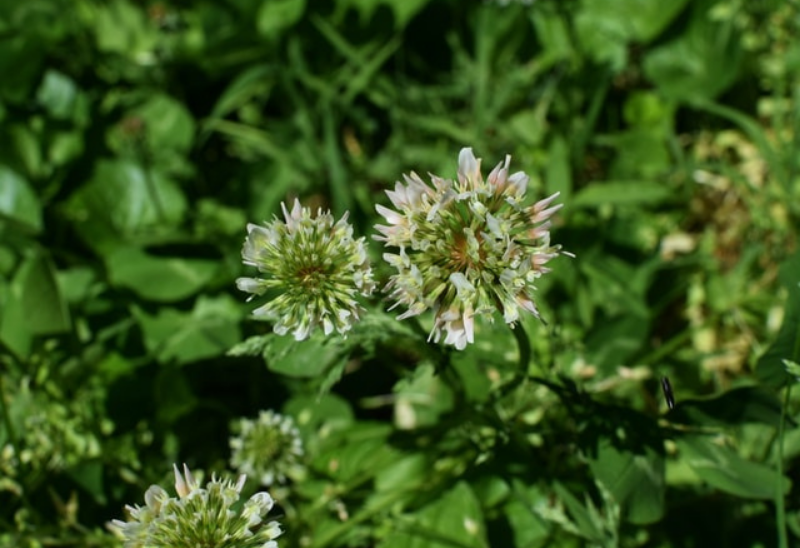
What to Do Before You Start Frost Seeding
- Select Your Site. Flat pastures with little to moderate snow cover are the best options for frost seeding. Fields or areas with thick snow cover can experience significant seed runoff with seasonal rains or snow melt. Focus your efforts on exposed, level to moderately level plots for the greatest success potential.
- Use Soil test to establish fertility needs. Since the ground may be frozen during seed applications, one can withhold fertilizer until after the first grazing or cutting. Soil test can be conducted after the spring thaw but should be completed before grazing is allowed. If soils test exist, seeds can be mixed with fertilizer and applied at the same time. Areas with low moisture accumulation or high Spring temperatures should avoid this technique (South and Western arrid states).
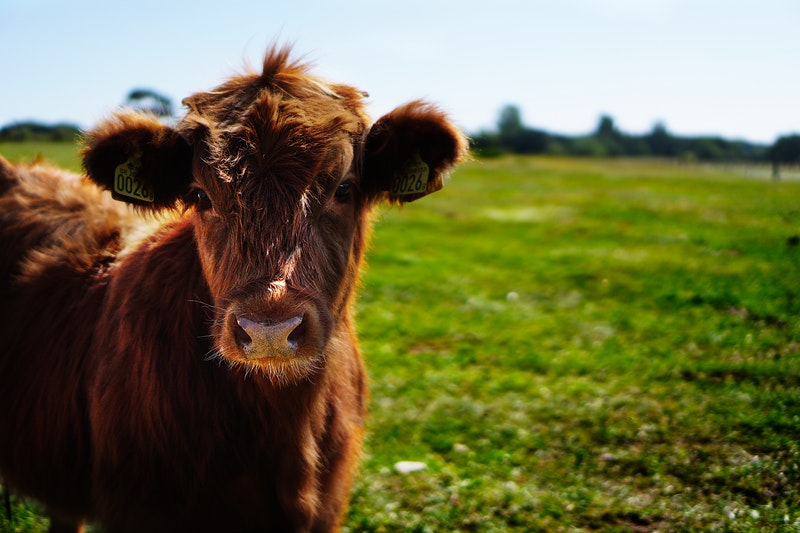
Three Keys to Frost Seeding Success
- Seed to soil contact is the number one factor in successful frost seed germination and seedling emergence. Starting with a short, open forage stand is ideal. Wind, rain and snowfall all aid moving seeds from suspended plant parts, stones and debris allowing for great seed contact. Early time frames allow for the greatest exposure to these environmental conditions. One can rarely apply seed too early, in fact late fall dormant applications also work well for this same purpose.
- Choose a high quality seed. Start with a species well-suited to frost seeding. Consider using improved seed to ensure high germination and low weed content. Deer Creek Seed offers both common and improved clover varieties for the best selection.
- Inoculate Legume Seeds. Bacterial inoculants ensure that your legume’s roots will produce sufficient nodules to efficiently fix nitrogen. If you’re counting on the nitrogen-fixing power of legumes to benefit your other pasture species, add an inoculant to your seed as a low cost nitrogen insurance policy. Remember that inoculants are species-specific, so be sure to choose the correct one for your seed type. Deer Creek Seed offers many legume varieties that are pre-inoculated and coated for easy seeding convenience. We also offer a combined clover/alfalfa inoculant that can be used for both species!
When is the Best Time to Frost Seed a Pasture?
Successful frost-seeded pastures depend on the late winter/early spring combination of nighttime freezing temperatures and daytime thawing. Ideally you want to spread seed when there are a few weeks of freezing nights left, or roughly 45 days before grass growth begins. In the Upper Midwest, this is usually in March. Check with your local county Extension agent for ideal frost seeding dates in other regions.
How to Frost Seed Clover and Other Forage Species
Frost seeding germination rates are lower than traditional methods. But since you are planting into established sod, the seeding rate needn’t be as high as if you were starting with bare soil. Your seeding rate becomes dependent on your field conditions (amount of exposed ground), the selected forage species, and desired stand thickness.
This balancing act may require you to refine your frost seeding process over time. But it’s such an easy process, the experimentation is easily worth the minimal cost and effort!
(Chart by The University of Wisconsin Extension)
Seed can be broadcast spread by tractor or ATV-mounted equipment or even a simple hand-cranked seeder. Conventional roller seeders can be used, which could impact field conditions. Whatever spreading method you choose, be sure to adjust the seeding width appropriate to your seed species. And take a moment to check your seed distribution. Spinning seeders can favor one side if not properly adjusted.
Remember if you want to seed multiple species, spread grass and legume seeds in separate passes. The lighter, larger grass seeds won’t throw as far as smaller clover seeds. Your goal is even seed distribution.
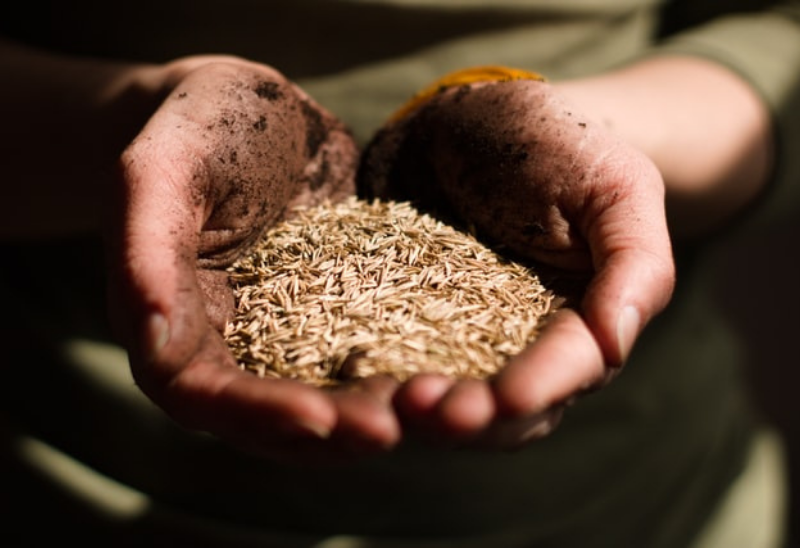
How Should I Control Weeds in Frost-Seeded Pastures?
Controlling plant competition is important to allow new seedlings to establish properly. Clip or graze competing growth to the height of your newly added species. As your new seedlings grow, keep the existing forage height in check, grazing from 8-10 inches down to 4 inches throughout the spring and summer months.
This is something you want to stay on top of throughout the coming season. It’s essential to manage the existing species so they don’t shade out and smother developing growth.
Should I Fertilize Frost-Seeded Pastures?
Fertilizers promote growth, so it sounds like a necessity. But supplemental nitrogen should not be added initially, even if recommended on your soil report. Nitrogen will stimulate the existing pasture species, requiring more mowing or grazing management by you. Do apply any soil-test recommended phosphorus in late April or early May to encourage seedling growth.
All pastures and forage plots require some degree of maintenance for optimum performance. But frost seeding is a case where less is more.
Are There Any Risks to Frost Seeding?
One hidden risk of frost seeding is overabundance. Overzealous legume seeding and a sudden clover increase in your livestock’s diet can lead to springtime bloat in ruminants. Stick to the recommended seeding rates and rotational grazing to maximize the outcome of your pastures and your livestock.
The Best Kept Secret
Frost seeding is the best kept secret of wise pasture managers. Successful frost seeding requires attention to a few key factors, but it truly is a simple and inexpensive way to revitalize worn pastures and sparse forage areas.
Frost seeding can increase your pasture species mix and improve your forage yields by 1-2 tons of dry matter per acre at minimal cost and effort.
Now is the time to get started. Incorporating frost seeding into your regular pasture management can extend your grazing season and improve herd productivity on intensively managed grazing operations. Take advantage of nature’s free service with frost seeding this year!
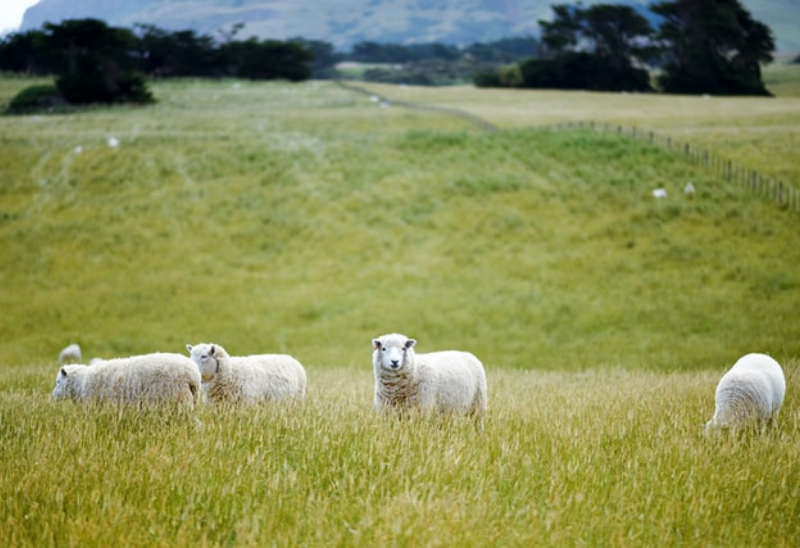
Additional Resources
- Mike Rankin from the University of Wisconsin Extension wrote an excellent frost seeding guide with a detailed table of expected germination percentages and suggested seeding rates.
- The University of Kentucky has a short but helpful article on the key elements for frost seeding legumes.
- Cornell University’s Small Farms Unit offers a brief frost seeding overview with an emphasis on tillage.
- PennState Extension offers a great article on frost seeding with suggestions on soil texture and improving seed to soil contact.



